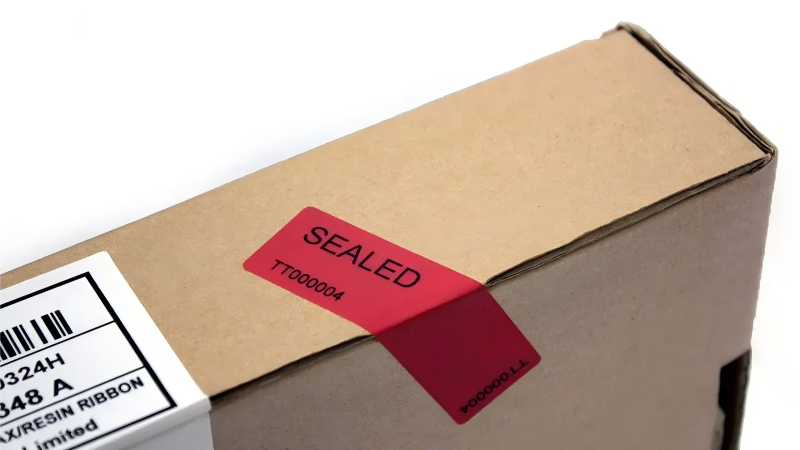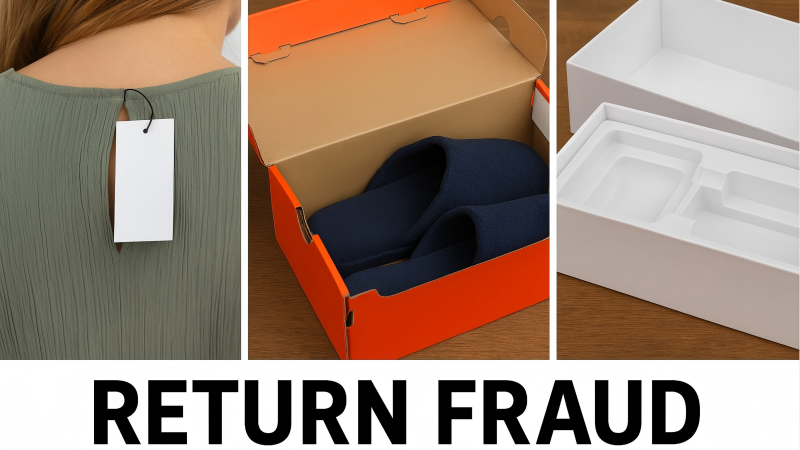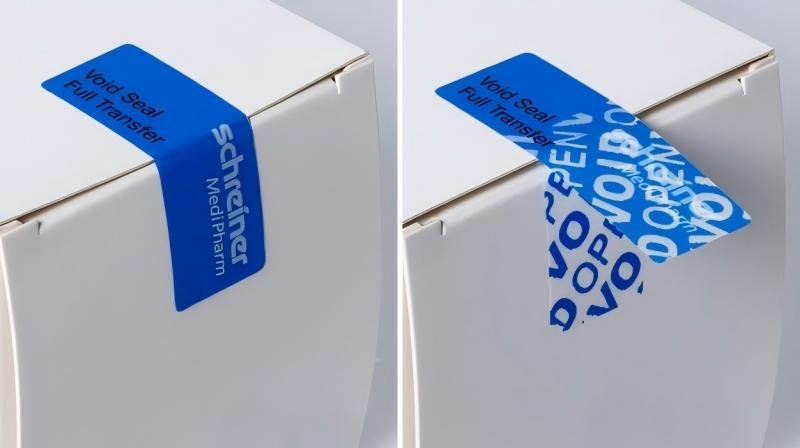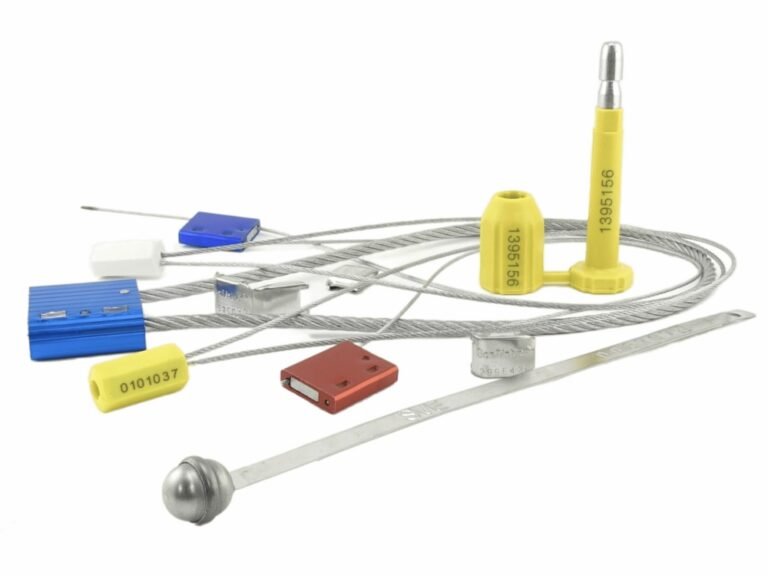Return fraud is bleeding your profits dry, turning your valuable inventory into a free rental service. You're losing money on every "used-as-new" return, but feel powerless to stop it.
Tamper-evident labels fight return fraud by acting as a physical gatekeeper. When placed strategically, a customer must break the seal to use the product, making it non-returnable. This ends "wardrobing" and forces the customer to commit to their purchase.

In my 20 years in this industry, I've seen the vast majority of companies fail when using tamper-evident labels against return fraud. They focus 100% on what the label shows after it's torn—like a "VOID" message—but they completely ignore the 90% that actually determines success: where the label is placed. A truly effective anti-fraud strategy isn't about the label's technology; it's about its strategic application. You must place the label on the "path of no return"—a point the customer physically cannot bypass to use, try on, or enjoy the product's value. This transforms the label from passive evidence into an active question: "Are you returning this, or are you breaking this seal and owning it now?" It's a choice they can't avoid and the only way to physically stop wardrobing fraud.
What Are the Most Common Types of Return Fraud?
You see a spike in returns and suspect fraud, but you can't identify the specific tactics being used against you. Without understanding the enemy's methods, you can't build an effective defense.
The most common types of return fraud are "wardrobing" (buy, use, and return), price arbitrage (returning a cheaper item for a higher refund), component swapping, and returning stolen merchandise for cash or store credit.

Before you can fight back, you need to know exactly what you're up against. These aren't just one-off annoyances; they are deliberate tactics that eat into your profit margins.
A recent report indicates that retailers will lose 103 billion US dollars in 2024 due to fraudulent returns and claims. Fraudulent returns accounted for about 15% of the total estimated $685 billion in returns last year. From my experience, these are the primary schemes that tamper-evident labels are designed to combat.
Key Types of Return Fraud
| Fraud Type | The Tactic | How It Hurts Your Business |
|---|---|---|
| Wardrobing | A customer buys an item (e.g., a dress, a tool), uses it for a short period, and then returns it for a full refund, claiming it was unused. | You receive used, devalued merchandise that cannot be resold as new. You bear the cost of shipping, inspection, and restocking, all for zero revenue. |
| Component Swapping | A customer buys a new electronic device, removes a valuable component (like a graphics card or processor), replaces it with an old or broken part, and returns the item. | You unknowingly accept a devalued, non-functional product back into inventory. This is particularly damaging for high-value electronics. |
| Price Arbitrage | A fraudster buys an identical item at a discount from another store (or steals it) and returns it to your store for a full-price refund. | You are essentially buying a product from a fraudster at an inflated price, resulting in a direct cash loss. |
| Open-Box Fraud | A customer returns a product box that is either empty or filled with a worthless item of similar weight, often called the "brick-in-a-box" scam. | You suffer a 100% loss on the product and are often unaware of the fraud until the box is opened for restocking, by which point it's too late. |
How Do Tamper-Evident Labels Serve as the First Line of Defense?
You've considered using labels, but you worry they're just simple stickers. You're skeptical that such a small item can deter a determined fraudster from exploiting your return policy.
A tamper-evident label works by creating a fragile, "single-use" barrier. When correctly applied, the label is designed to self-destruct upon any removal attempt, providing clear, undeniable physical evidence that the item's seal has been broken.

The power of a tamper-evident label is not in its strength, but in its weakness. Unlike a lock that is meant to be strong, a security label is designed to fail in a very specific and visible way. This failure is what provides the proof. There are two primary ways these labels self-destruct, and understanding them is key to seeing their value.
Method 1: Material Fracturing
These labels, often made of destructible vinyl, have a consistency similar to a dried eggshell. They are ultra-brittle and bonded with a very strong adhesive. The moment someone tries to peel one off, it shatters into countless tiny pieces. It's physically impossible to remove it cleanly, and reassembling it is out of the question. This provides immediate, messy evidence of tampering.
Method 2: Delamination (VOID Labels)
These are more sophisticated. The label is constructed in multiple layers. When someone attempts to peel it, the layers separate, revealing a hidden word like "VOID," "OPENED," or a custom pattern. This message can be designed to appear on the surface of the product, on the label itself, or both. This clear linguistic cue removes all ambiguity about whether the seal was broken.
The key takeaway is that these aren't just stickers. They are precisely engineered security devices that use controlled failure to create irrefutable proof.
Which Tamper-Evident Labels Should Be in Your Arsenal?
You're convinced you need labels, but the choice is overwhelming. Non-residue, full-residue, destructible—how do you know which one is right for your specific product and doesn't create new problems?
The right label depends on your product and your return policy. For apparel, use non-residue VOID labels. For electronics or hard goods, destructible vinyl or residue-leaving labels are best. For returns of online orders, a security bag with a tamper-evident closure is essential.

Choosing the right tool for the job is critical. In my experience, using the wrong type of label is a common reason why anti-fraud programs fail. You wouldn't use a screwdriver to hammer a nail. The same logic applies here. Your choice should be guided by the product's surface, its value, and the customer experience you want to create.
Here are my recommendations based on product category:
- For Apparel, Handbags & Accessories: Use Non-Residue VOID Hang-Tag Loops. These are labels that form a loop, often through a zipper pull or buttonhole. When removed, the "VOID" message appears on the label itself, but the dress or handbag is left perfectly clean. This is crucial for high-fashion items where a sticky residue would be unacceptable.
- For Electronics & Hard Goods (Boxes): Use Destructible Vinyl Labels or Total-Residue VOID Labels. Here, the goal is maximum deterrence. A destructible label that shatters across a box seam makes it obvious the product was opened. A total-residue label that leaves a sticky "OPENED" message all over the box is a powerful deterrent, as the fraudster knows the return will be instantly rejected.
- For Online Order Returns: Use Tamper-Evident Security Bags. When a customer initiates a return, you can send them a security bag. They place the item inside and seal it. The bag's closure is a tamper-evident tape. If the bag arrives at your warehouse with a voided seal, you have proof the wrong item may have been put inside.
Where Should You Apply Labels for Maximum Impact?
Strategic label placement is crucial for maximum effectiveness. If placed incorrectly, fraudsters can bypass the seal and still use or return the product.

Labels must be placed on a "critical path" that prevents users from accessing the product's core value without breaking the seal. Strategic label placement is the most critical step in combating return fraud.
Strategic Placement Points for Tamper Evident Labels:
| Product Category | Placement Location | How It Works |
|---|---|---|
| Electronics | Opening points, ports, battery compartments | Cannot use product without breaking seal |
| Pharmaceuticals & Cosmetics | Bottle caps, package seams | Visibly shows if product has been opened |
| Luxury Goods | Package seals, tag attachments | Prevents use and repackaging for returns |
| Equipment & Instruments | Access points, service panels | Shows unauthorized tampering |
| Product Packaging | Sealing points, critical seams | Ensures package integrity, prevents substitution |
By strategically placing tamper evident labels, they transform from passive evidence into active protection, effectively preventing "use and return" fraud.
What Are the Added Benefits of a Tamper-Evident Strategy?
You think these labels are only about stopping fraud. However, you're overlooking the additional operational and brand benefits that a well-implemented tamper-evident program can bring to your business.
Beyond fraud prevention, tamper-evident labels improve your brand perception by signaling quality control. They also streamline the returns process, allowing warehouse staff to quickly sort and approve returns, saving significant time and labor costs.

While the primary goal is to cut down on fraud, my clients are often surprised by the positive side effects of a good tamper-evident strategy. It's not just a defensive move; it's a proactive step that improves your entire operation and even strengthens your brand.
Brand Perception and Customer Confidence
A tamper-evident label is a signal to honest customers. It tells them that the product they are receiving is factory-fresh, sterile, and has not been touched by anyone else. In a post-pandemic world, this hygiene assurance is a powerful selling point, especially for cosmetics, apparel, and electronics. It shows you care about quality control. It builds trust and can even lead to honest customers feeling more confident in keeping their purchase.
Conclusion
A tamper-evident strategy is your definitive weapon against return fraud, but only when you focus on placement. By making the seal an unavoidable choice, you reclaim control of your returns policy.
End Your Return Fraud Nightmare with ProtegoSeal
Stop letting wardrobing and return scams devalue your products. At ProtegoSeal, we specialize in creating strategic tamper-evident solutions that work. We'll help you choose the right label and, more importantly, the right placement. Contact us for a consultation and put an end to return fraud today.

